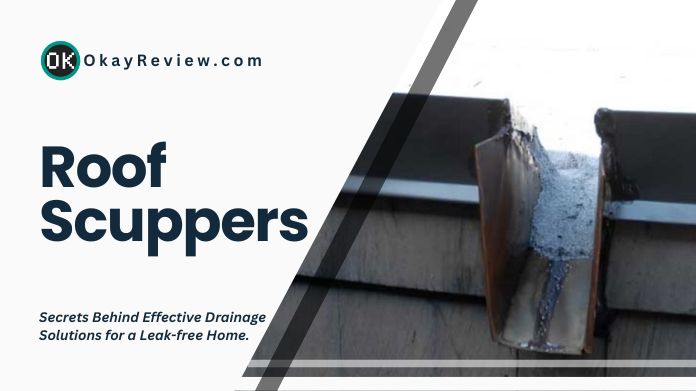Have you ever wondered how large buildings with flat roofs stay dry during heavy rainfalls? The secret often lies in an unsung hero of roof drainage: the roof scupper.
These seemingly inconspicuous outlets are pivotal in ensuring water doesn’t accumulate, potentially causing damage or leaks.
This OkayReview article will explore roof scupper design, functionality, and why they’re essential for many structures.
Whether you’re a homeowner, architect, or just someone curious about building designs, understanding roof scuppers can offer valuable insights into effective roof management.
Join us as we uncover the mysteries of these vital drainage tools.
Table of Contents
What Are Roof Scuppers?
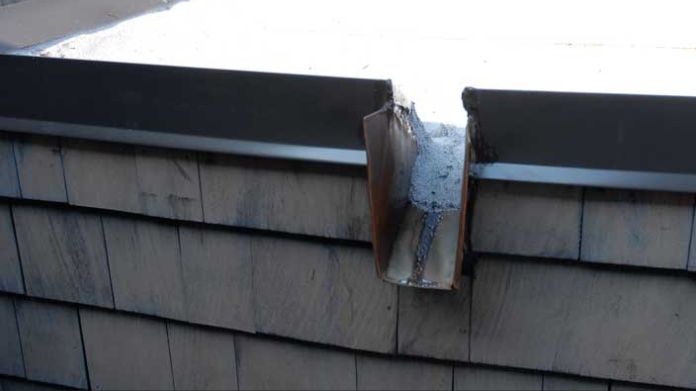 Roof Scuppers are specialized drainage devices designed for flat or low-sloped roofs, allowing for efficient water removal.
Roof Scuppers are specialized drainage devices designed for flat or low-sloped roofs, allowing for efficient water removal.
They are openings or outlets cut into the parapet walls or roof edges, ensuring that water doesn’t accumulate and is directed away from the roof surface.
You can fit these openings with metal spouts or downspouts to further channel the water to a designated area, preventing potential water damage or pooling on the roof.
Beyond their functional role, roof scuppers can also be aesthetically designed to complement the architectural style of a building.
Whether a commercial building or a residential structure with a flat roof, roof scuppers are crucial in maintaining the roof’s integrity and longevity by ensuring adequate water drainage.
We’ve seen how technology is changing how we approach home renovation projects. Magnetic flooring, in addition to roof scuppers, is a terrific alternative for DIY enthusiasts.
Its simple installation technique and customizable patterns make it an excellent alternative for folks who enjoy being creative.
The Role of Roof Scuppers in Drainage
Roof scuppers, often overlooked, play a pivotal role in safeguarding flat or low-sloped roofs from water accumulation.
These strategically positioned outlets channel rainwater and melting snow away from the roof, preventing potential damage and ensuring structural integrity.
Beyond merely directing water, they combat issues like mold growth, material degradation, and the formation of ice dams in colder regions.
In essence, roof scuppers are the unsung heroes of roof drainage, acting as the primary defense against water-related challenges ensuring the longevity and health of a building’s roof.
Roof Scuppers Vs. Roof Drains
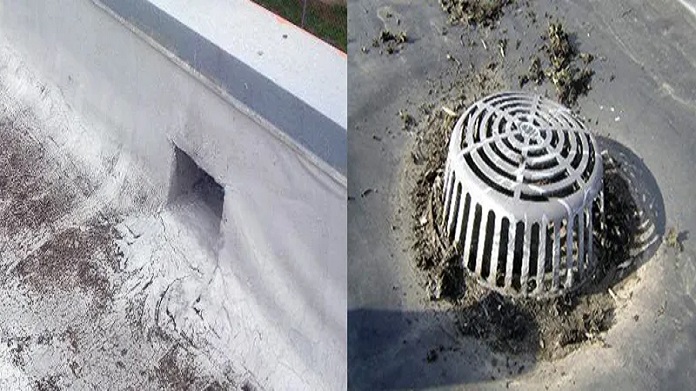 When managing water on flat or low-sloped roofs, two primary systems come to the forefront: roof scuppers and roof drains.
When managing water on flat or low-sloped roofs, two primary systems come to the forefront: roof scuppers and roof drains.
While both serve the essential purpose of directing water away from the roof, their design, functionality, and application can vary significantly.
Let’s delve into the distinct characteristics of each to understand their unique roles in roof drainage.
Roof Scuppers
Roof scuppers are outlets in parapet walls or roof edges that direct water away from the roof, preventing pooling.
They can be both practical and decorative, complementing a building’s architecture. They’re beneficial where internal drainage isn’t viable or when directing water away from a building’s foundation.
Roof Drains
Roof drains are similar to bathtub or sink drains but tailored for roofs. Positioned at areas where water accumulates, they connect to internal pipes that channel water away from the building.
They’re prevalent in large commercial structures where efficient water management is vital.
Installation and Maintenance of Roof Scuppers
Installation of Roof Scuppers
1. Assessment and Planning: Before installing, it’s crucial to assess the roof’s size, slope, and expected water volume. It helps in determining the appropriate size and placement of the scuppers.
2. Positioning: Scuppers should be strategically placed at low points or areas where water tends to accumulate. It ensures maximum drainage efficiency.
3. Sealing: Once installed, sealing around the scupper’s edges is vital. It prevents potential leaks and ensures the water flows through the scupper, not around it.
4. Integration with Downspouts: For roofs that employ downspouts, ensure the scupper seamlessly connects to them, facilitating smooth water flow.
Maintenance of Roof Scuppers
1. Regular Cleaning: Over time, debris like leaves, twigs, and dirt can clog scuppers. Regular cleaning, especially after storms or during fall, is essential to prevent blockages.
2. Inspection: Inspect scuppers at least twice yearly for signs of wear, tear, or damage. Keep an eye out for cracks, loose seals, and corrosion.
3. Seal Checks: The seals around the scuppers can deteriorate over time. Ensure they remain intact and reseal if necessary to prevent potential leaks.
4. Flow Test: Occasionally, pour water into the scupper to test its flow. It can help identify any unseen blockages or issues.
Types and Designs of Roof Scuppers
Roof scuppers, while primarily functional, can also serve as architectural features that enhance the aesthetic appeal of a building.
Let’s explore some of the most common types and their unique designs.
1. Through-Wall Scuppers
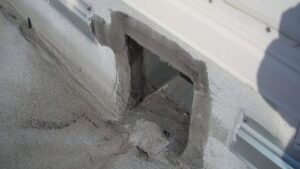 These are the most common type of scuppers, and, as the name suggests, they pass through the parapet wall, allowing water to flow off the roof and away from the building.
These are the most common type of scuppers, and, as the name suggests, they pass through the parapet wall, allowing water to flow off the roof and away from the building.
They are typically rectangular but can be customized to fit specific architectural designs.
2. Overflow Scuppers
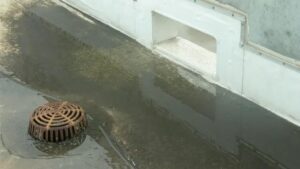 Designed as a safety measure, overflow scuppers are positioned slightly higher than the primary scuppers.
Designed as a safety measure, overflow scuppers are positioned slightly higher than the primary scuppers.
They come into play when the central drainage system is overwhelmed, ensuring excess water has an escape route and preventing potential roof damage.
3. Decorative Scuppers
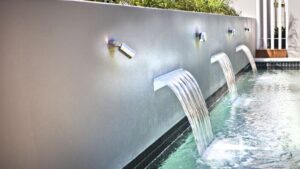 Beyond mere functionality, decorative scuppers are designed to add an artistic touch to a building’s exterior.
Beyond mere functionality, decorative scuppers are designed to add an artistic touch to a building’s exterior.
They can be crafted in various shapes, like arches or intricate patterns.
Sometimes even feature ornamental elements like lion heads or gargoyles, reminiscent of historic architecture.
4. Combination Scuppers
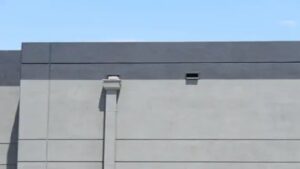 These scuppers serve dual purposes. They can act as both primary drainage outlets and overflow systems.
These scuppers serve dual purposes. They can act as both primary drainage outlets and overflow systems.
Their design often incorporates an immediate opening at a lower level and an overflow section slightly above, ensuring efficient water management.
5. Trough Scuppers
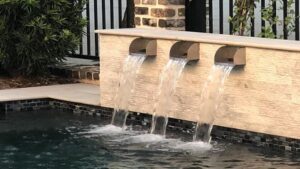 Trough scuppers are designed with an extended channel or trough that directs water away from the building’s facade.
Trough scuppers are designed with an extended channel or trough that directs water away from the building’s facade.
This design ensures that water doesn’t run down the exterior walls, preventing potential staining or damage.
Benefits of Using Roof Scuppers on Flat Roofs
Let’s explore the manifold benefits of incorporating roof scuppers into flat roofing systems.
1. Efficient Water Drainage: The primary advantage of roof scuppers is their ability to channel water away effectively. By preventing water accumulation, they safeguard the roof from potential water damage, leaks, and structural issues.
2. Extended Roof Lifespan: Consistent water pooling can deteriorate roofing materials over time. By ensuring swift drainage, scuppers indirectly contribute to extending the roof’s lifespan, saving on potential repair or replacement costs.
3. Prevention of Interior Damage: Water intrusion is a property owner’s nightmare. By facilitating efficient water exits, roof scuppers minimize the risk of leaks that could lead to interior water damage, mold growth, and other related issues.
4. Cost-Efficient: Compared to other drainage systems, roof scuppers are relatively cost-effective. They require minimal materials and can be easily integrated into existing roofing systems without significant modifications.
5. Aesthetic Appeal: Beyond their functional benefits, roof scuppers can be designed to enhance the building’s aesthetic appeal. Available in various materials and designs, they can be tailored to complement the structure’s architectural style.
6. Reduced Maintenance Needs: Roof scuppers in place significantly reduce the frequency and intensity of roof maintenance. They help prevent common issues like water pooling, reducing the need for regular inspections and interventions.
7. Environmentally Friendly: By directing rainwater to specific locations, roof scuppers allow rainwater harvesting, an eco-friendly practice that can be used for landscaping or other non-potable purposes.
Conclusion
Though simple in design, roof scuppers play a monumental role in roof maintenance. Ensuring adequate drainage protects roofs from potential damage and extends their lifespan.
Whether constructing a new building or renovating an old one, pay attention to the silent guardian of roofs – the roof scupper.

